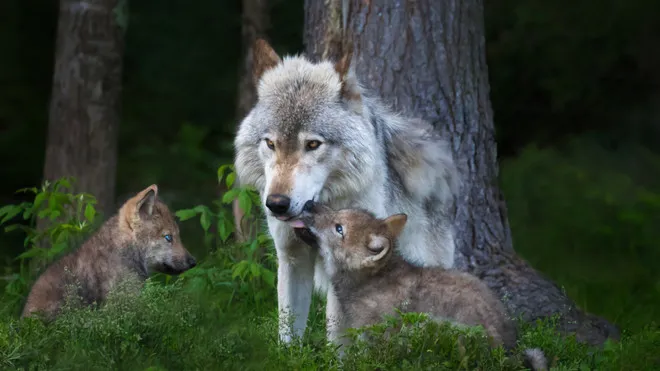Colorado, renowned for its majestic natural beauty and incredible biodiversity, is becoming an increasingly attractive destination for wildlife enthusiasts. In particular, the resurgence of the gray wolf after nearly a century of absence has heightened interest in the state’s wildlife sanctuaries. This article takes you on a journey to explore the wolf and wildlife sanctuaries in Colorado, where you can witness unspoiled landscapes and learn about the efforts to conserve rare species.
The Meaningful Return of Gray Wolves to Colorado
The Colorado state government’s confirmation of the first gray wolf litter born after 80 years is not only joyful news for conservationists but also a sign that ecosystem restoration efforts are on the right track. Colorado residents’ vote in favor of wolf protection legislation demonstrates the community’s deep concern for biodiversity conservation. The return of gray wolves not only enriches the ecosystem but also plays a crucial role in natural balance by controlling populations of other animals.
Discovering Famous Wildlife Sanctuaries in Colorado
Colorado boasts numerous wildlife sanctuaries where visitors can admire the beauty of animals in their natural habitats. Here are some famous sanctuaries you shouldn’t miss:
1. Rocky Mountain National Park
Rocky Mountain National Park is a premier destination for nature and wildlife lovers. Spanning a vast area, this park is home to diverse wildlife, including elk, deer, black bears, and notably, gray wolves. Visitors can join eco-tours to learn about the area’s unique ecosystem and observe animals in their natural environment.

2. Great Sand Dunes National Park and Preserve
Beyond its towering sand dunes, Great Sand Dunes National Park and Preserve provides refuge for many unique wildlife species. Visitors can explore the desert ecosystem and learn about animals adapted to this harsh environment, including migratory birds, rodents, and reptiles.
3. Mesa Verde National Park
Mesa Verde National Park is not only a cultural heritage site with ancient cliff dwellings of the Ancestral Puebloan people but also a vital area for wildlife conservation. Visitors can explore historical sites while observing animals like deer, squirrels, and native bird species.
4. Colorado Wolf and Wildlife Center
The Colorado Wolf and Wildlife Center is a non-profit organization dedicated to rescuing and caring for wolves, foxes, and other carnivores. Here, visitors can learn about wolf behavior, participate in educational programs, and even experience a “Wolf Watch” at night to hear wolves howling in the wild. This unique and meaningful experience raises awareness about the importance of conserving wolves and other wildlife.
Unique Ecotourism Experiences
Besides visiting sanctuaries, visitors can engage in various ecotourism activities to explore Colorado’s natural beauty and learn about its ecosystems:
- Hiking: Colorado offers thousands of miles of hiking trails, from easy paths for beginners to challenging climbs for experienced mountaineers. This is a fantastic opportunity to explore mountain scenery and observe wildlife in their natural habitats.
- Kayaking and Rafting: Colorado’s rivers and lakes are ideal for kayaking and rafting. Visitors can enjoy the thrill of navigating rapids while admiring the surrounding natural beauty.
- Bird Watching: Colorado is a significant destination for bird enthusiasts. With diverse habitats ranging from high mountains to grasslands, Colorado is home to hundreds of bird species. Visitors can join bird watching tours to learn about native and migratory birds.
- Camping: Camping is a wonderful way to immerse yourself in nature and enjoy the tranquility of the mountains. Colorado has many picturesque campsites where visitors can pitch tents, build campfires, and stargaze.
Conservation Efforts and Sustainable Development
The Colorado state government and conservation organizations are working diligently to protect wildlife and their habitats. Conservation measures include habitat restoration, hunting controls, and community education about the importance of biodiversity conservation.
Furthermore, ecotourism plays a crucial role in supporting conservation efforts. By attracting visitors to sanctuaries and ecotourism activities, Colorado can generate revenue to fund conservation programs and raise public awareness about environmental protection.
Conclusion
Colorado is not only an attractive tourist destination with stunning natural landscapes but also a vital wildlife conservation hub. The return of the gray wolf is a testament to the positive results of conservation efforts. By exploring sanctuaries, participating in ecotourism activities, and learning about conservation efforts, visitors can contribute to protecting Colorado’s unspoiled beauty and biodiversity for future generations. Plan your trip today and discover the wonders Colorado has to offer!